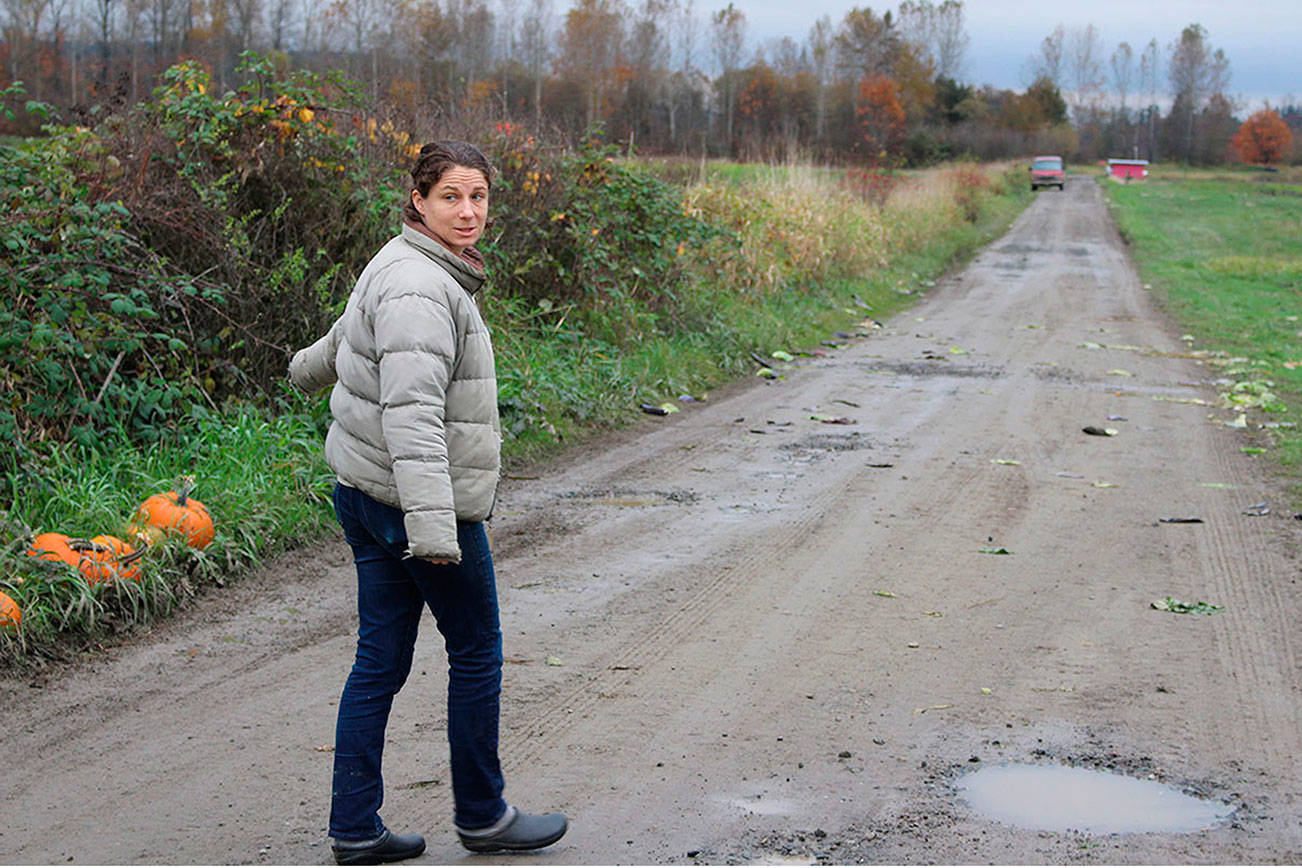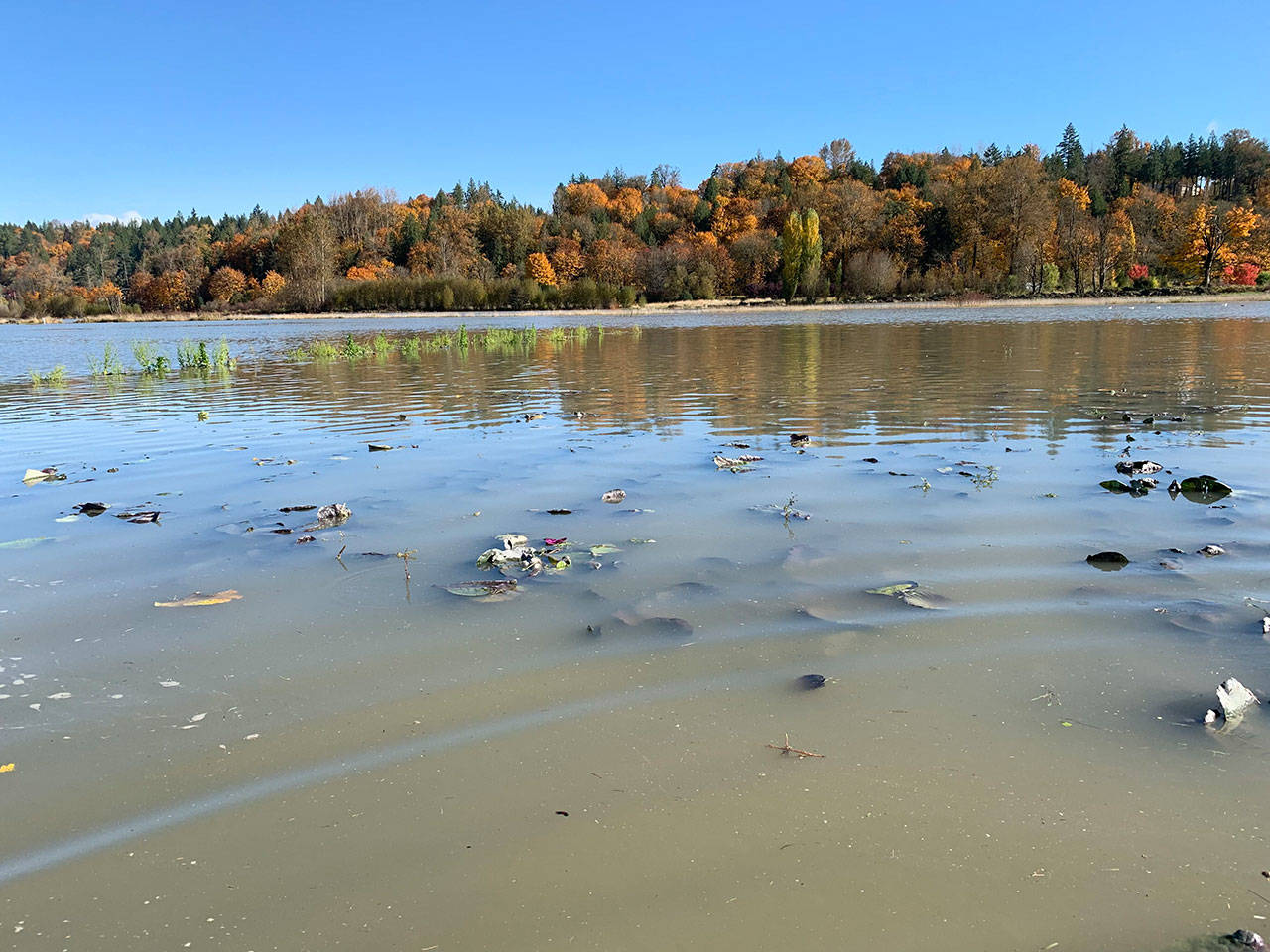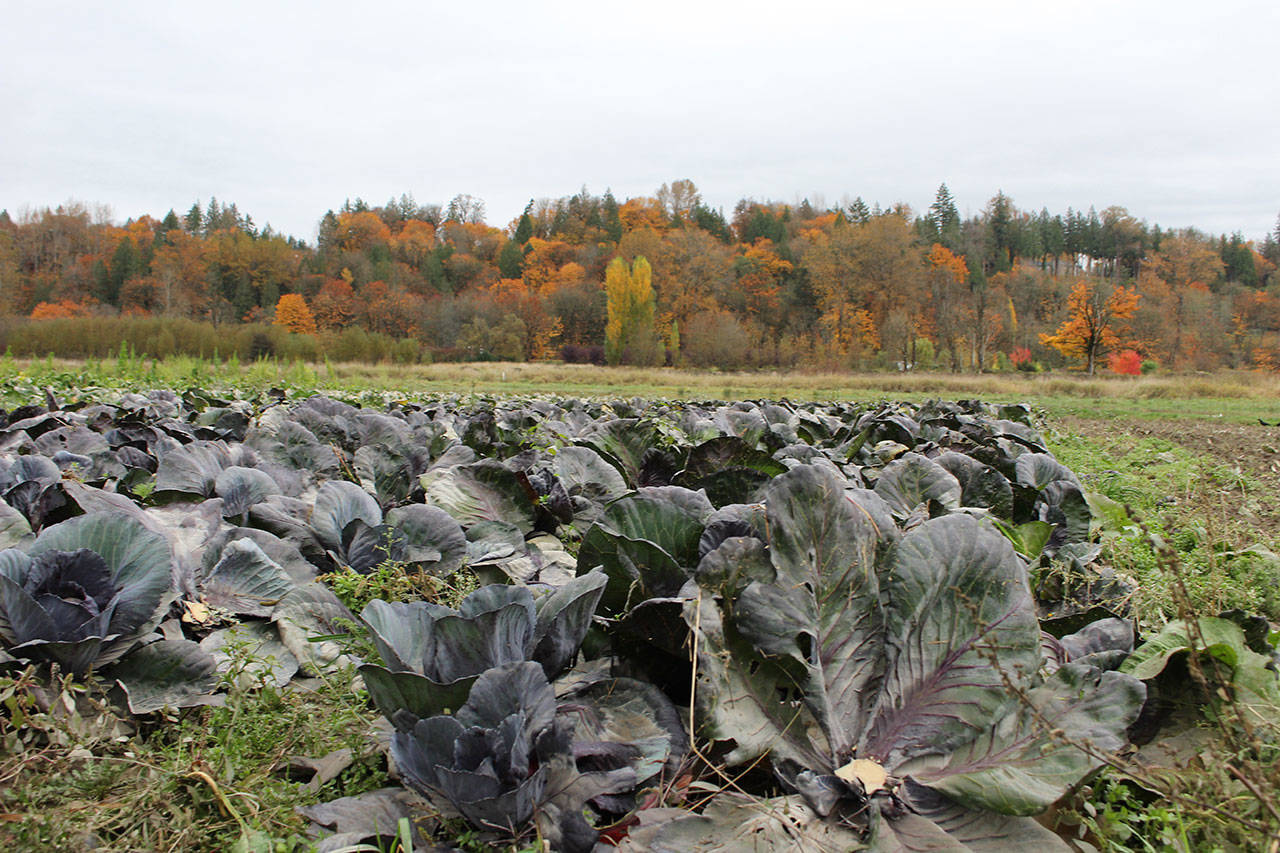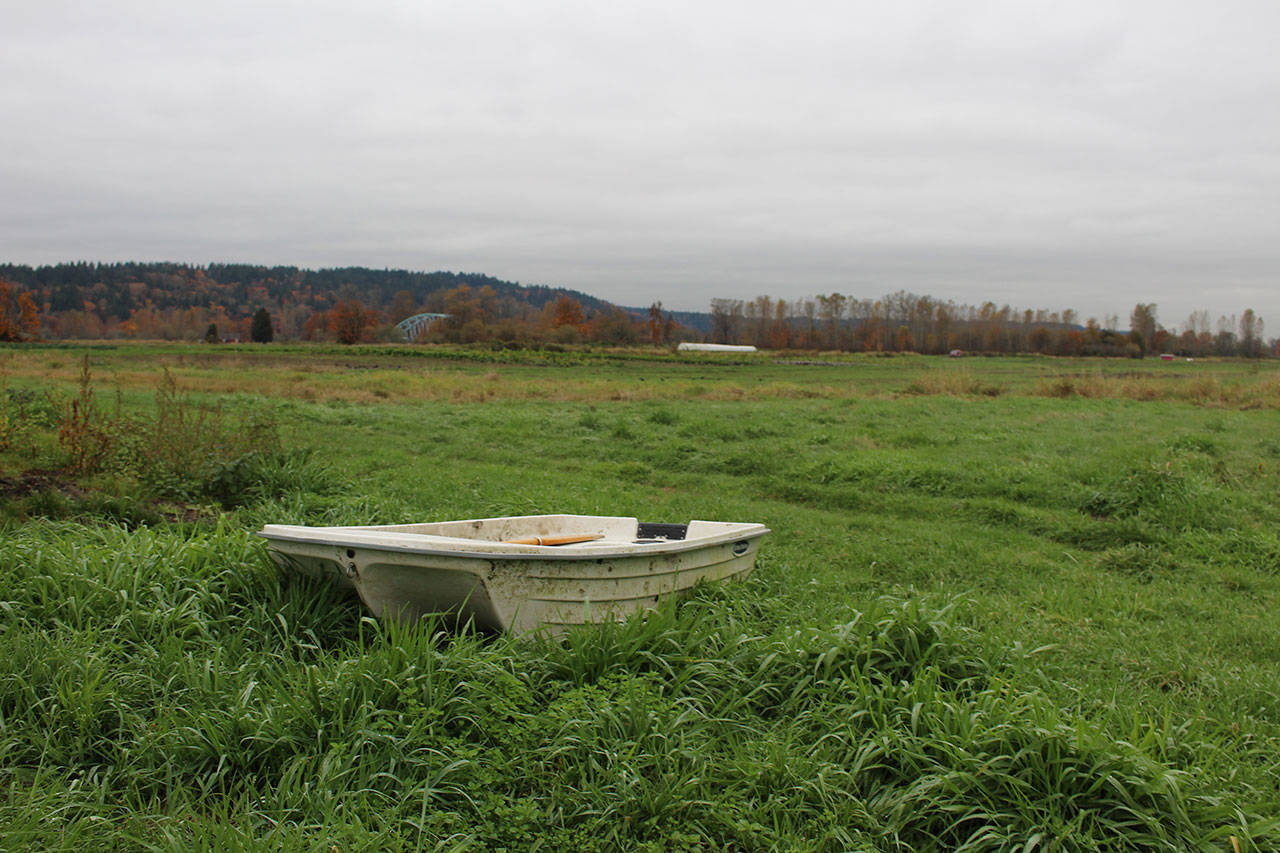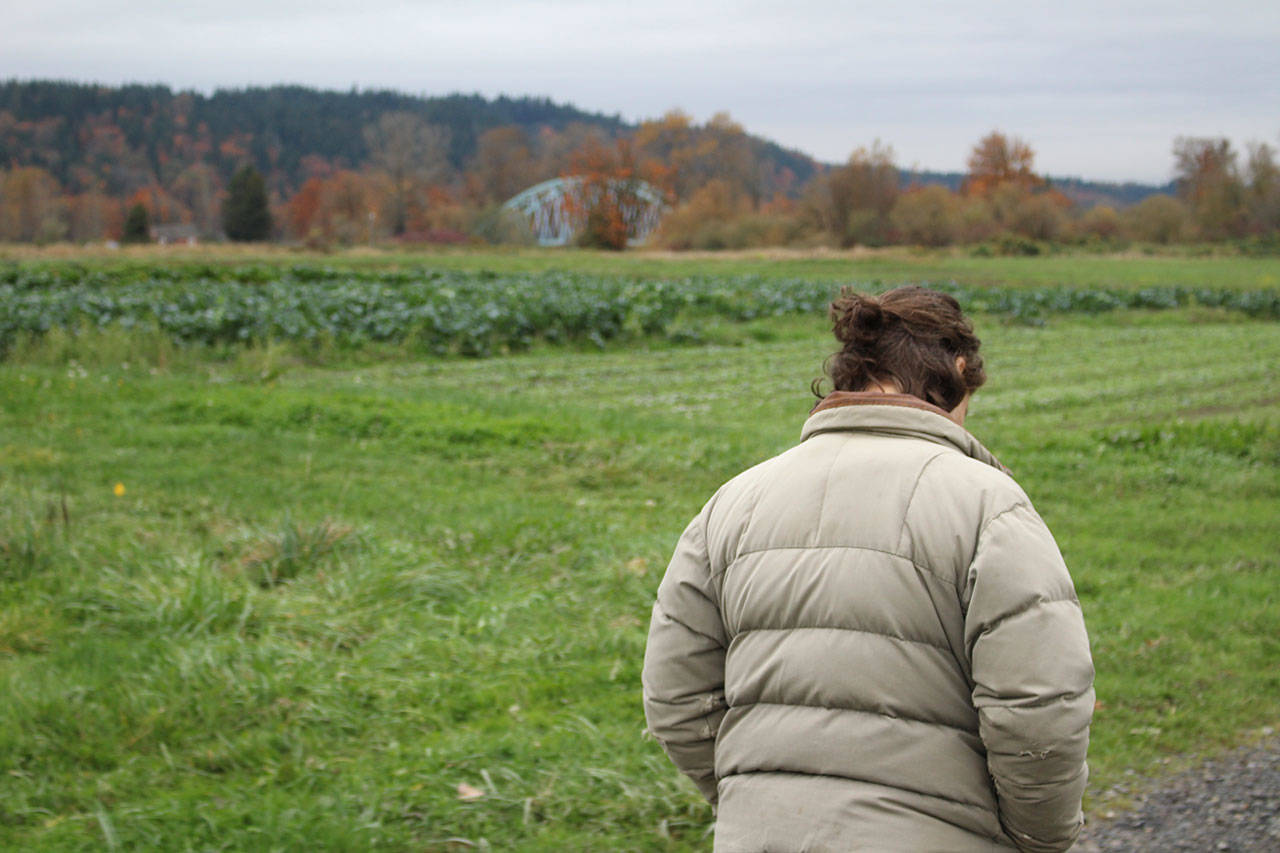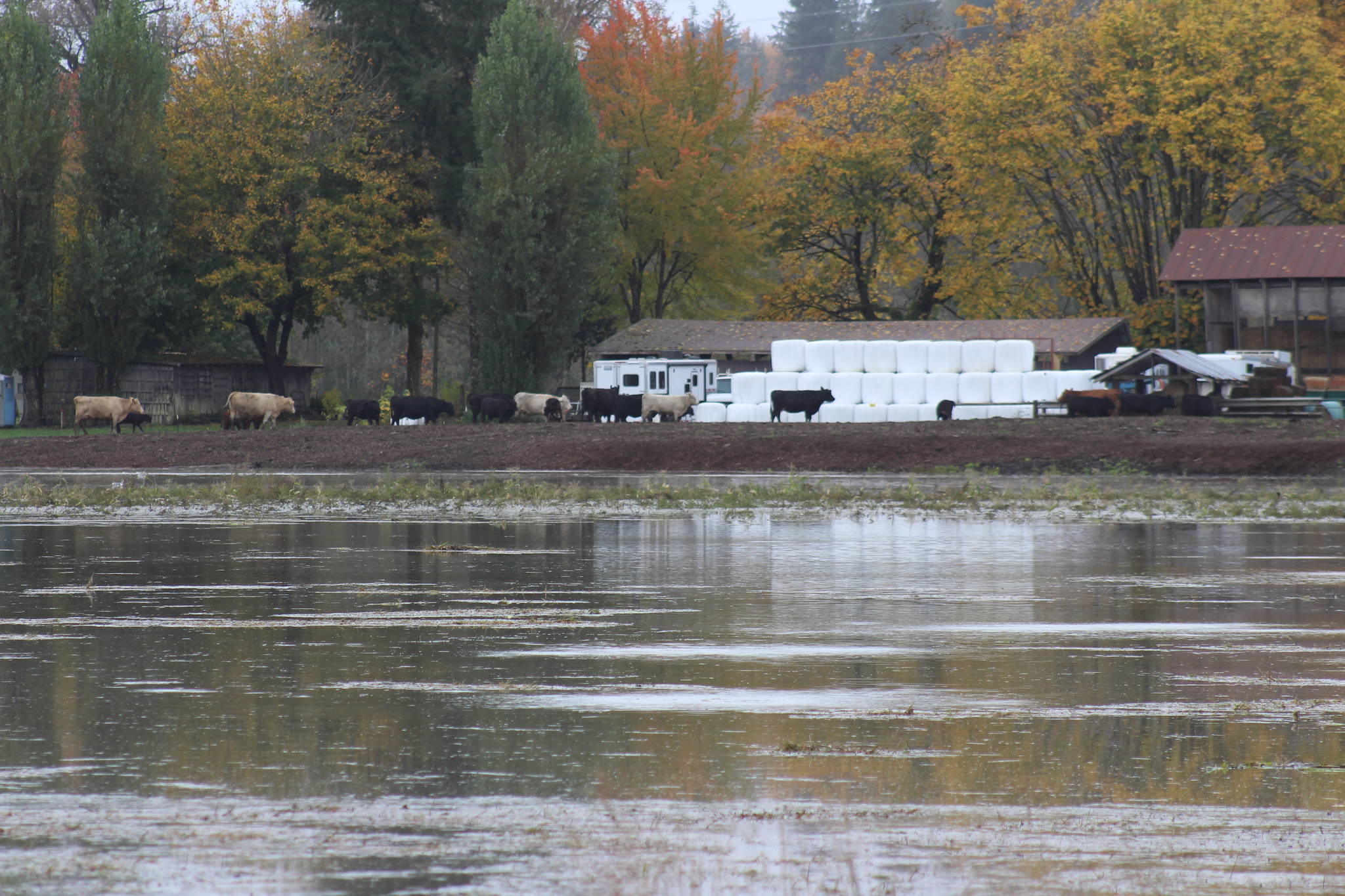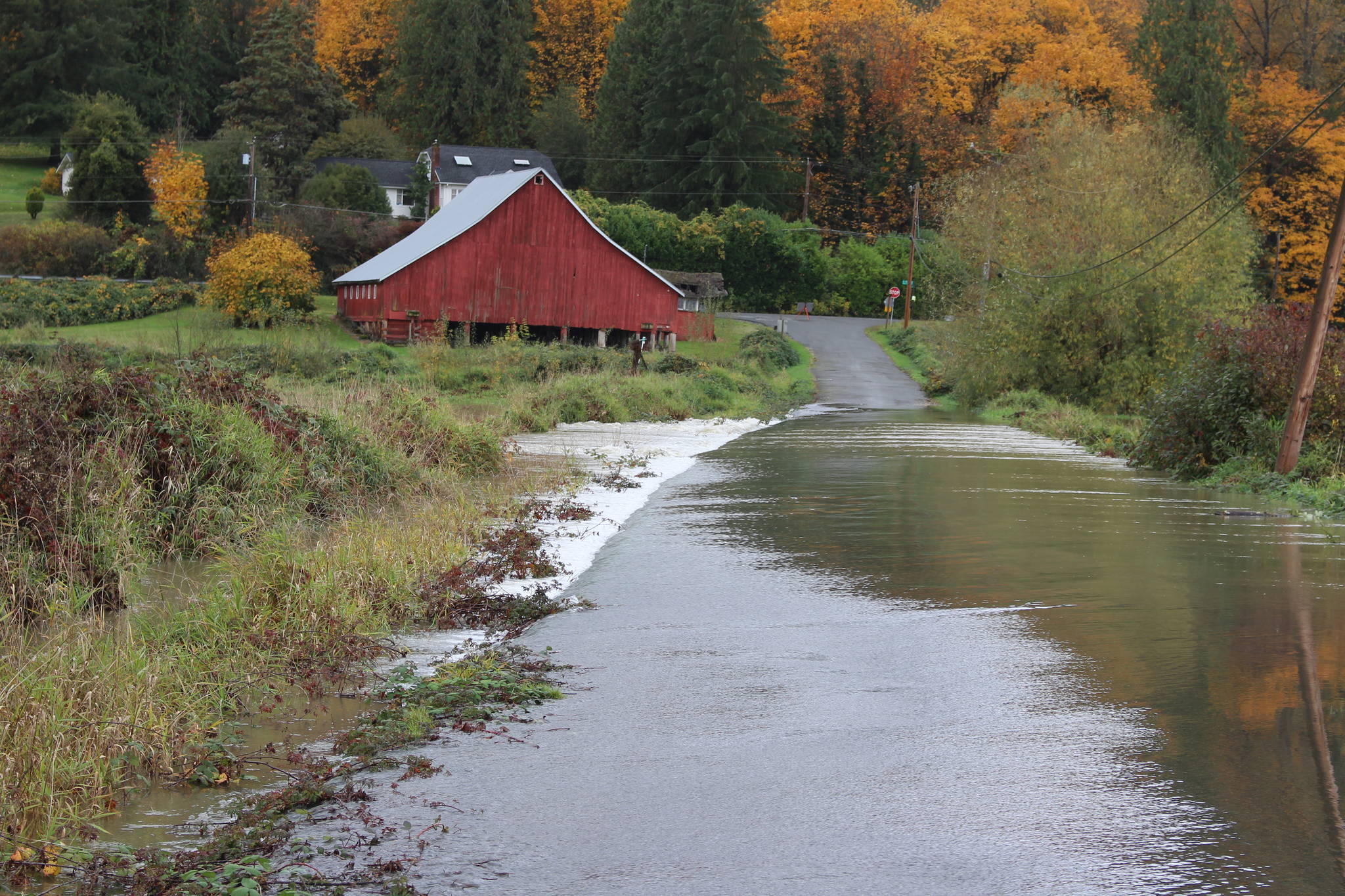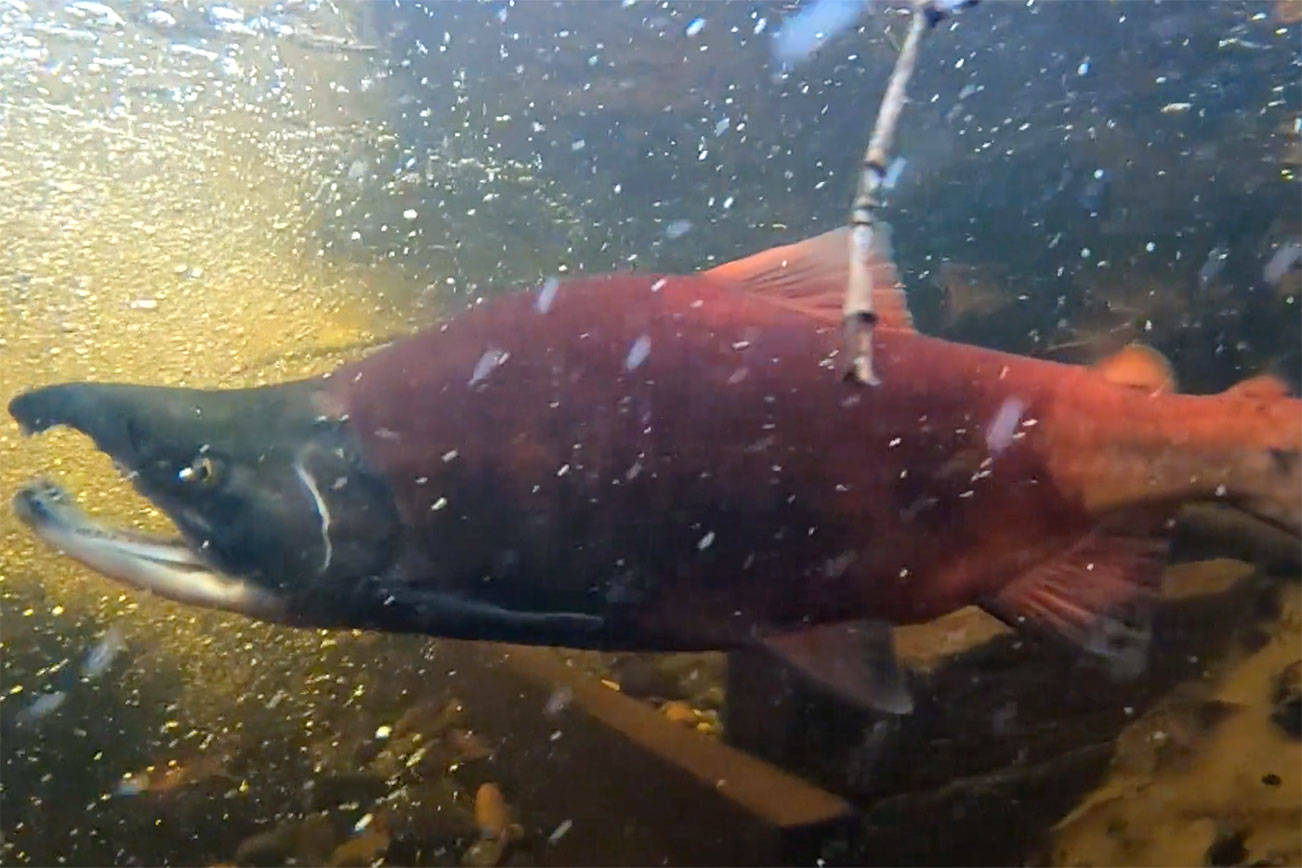Siri Erickson-Brown looked across her fields as she walked down her driveway. Days before, her family had rowed over them.
Erickson-Brown is among farmers in the Snoqualmie Valley who were affected by flooding on Oct. 22, when the Snoqualmie River breached its banks. The flooding was predicted to be minor, but the water ended up 8 feet higher than expected in many places. Roads were turned into waterways and low-lying fields fields filled and spilled into others.
At Local Roots Farm, the one Erickson-Brown runs with Jason Salvo and their two kids, the water cut off their driveway and flooded many of their fields. When the water was high enough to cut off access to their driveway — and for a boat to make it across the field without getting stuck — they packed up their children and rowed them to the road to be picked up safely by family.
Flooding has historically started right around Nov. 1. The last couple weeks of October are usually prime time for small growers who busily harvest their winter crops like cabbage and of course, pumpkins.
Despite planning for annual floods, Erickson-Brown said they were caught off-guard. With the early and unexpected flood, much of the couple’s crops were caught in the field.
“To lose the last 10 days of October, it’s like the most important days of the year,” Erickson-Brown said.
Federal guidelines state that crops touched by floodwater shouldn’t be sold, so Erickson-Brown and her 10 employees were out in the fields on Oct. 25, figuring out which crops were salvageable. Up to four of their 20 acres could have been affected, equalling around $120,000 in crops, although damages probably won’t be that high if portions are able to still be harvested, she said.
And her story isn’t unique. Other farmers suffered losses during the flood, which was the largest October flood on record since 1934. The Carnation gauge registered a high-point of 43,400 cubic feet per second (CFS) during this flood, while the Oct. 25, 1934, flood saw a flow of 47,000 CFS.
Cynthia Krass of the Snoqualmie Valley Preservation Alliance said there are around 200 farmers in the valley, and most of them likely suffered losses.
“There will be very few operations that won’t be impacted in some way,” Krass said.
The weekend before Halloween is a kind of like Black Friday for local farmers, when they sell crops, pumpkins and sometimes offer corn mazes and other activities. As Erickson-Brown walked around her property Oct. 25, she pointed out some pumpkins her staff had plucked from the river, presumably from another farm farther upstream.
Part of the problem with this flood was that forecasters and some officials, up until the day before, were expecting much less flooding. Erickson-Brown said she doesn’t blame NOAA forecasters, but more warning would have helped. If they had known two days before that moderate flooding was on the way, they could have harvested and saved an estimated 16,000 pounds of produce, she said. The crops that were flooded will now sit and rot in the field.
Erickson-Brown said her farm will be all right, but many of the crops she was planning to harvest through Nov. 1 were winter crops. They can be stored, and managing the vegetables keeps jobs available for her employees during the off-season.
The Snoqualmie Valley Preservation Alliance is working with tribes, the state and farmers to figure out ways to help reduce the effects of flooding. One of those is making it easier to clear out irrigation ditches, which help fields drain. They’re generally considered salmon habitat, which means maintaining them requires environmental mitigation, Krass said. Small off-channel water traps along the Snoqualmie River could also help, Erickson-Brown said.
National Weather Service hydrologist Brent Bower said their rainfall predictions were fairly accurate, but that it’s difficult to predict how precipitation will affect individual areas, especially when trying to factor in how saturated the soil may already be.
“Any storm or flood event we have, conditions change as the storm develops and comes through the area, so the forecast adjusts with that, so they did adjust to showing the moderate — even major flood categories that they eventually hit,” Bower said. “But that wasn’t what it looked like at first.”
King County also responded, opening its Flood Warning Center on Oct. 21 after heavy rains. It operated more than 24 hours before closing at 10 p.m. the following day. The flooding closed roads from North Bend to Duvall in the county. Upstream of Snoqualmie Falls, the flooding was relatively minor, and the lower reaches of the river saw significant flooding, especially in areas with river switchbacks.
Erickson-Brown said she thinks the flood may be an indicator of climate change. The University of Washington’s Climate Impacts Group has predicted that while the overall amount of precipitation will likely remain similar, its timing could shift. This means summers could become longer and drier, and the wet season could see heavier rainfall. Warmer winters could also mean less water will fall as snow, and more as rain.
For Erickson-Brown, this could mean thinking about harvesting earlier in October. For other farmers, it could mean changing the crops they grow to ones which can better withstand hot summer weather.
